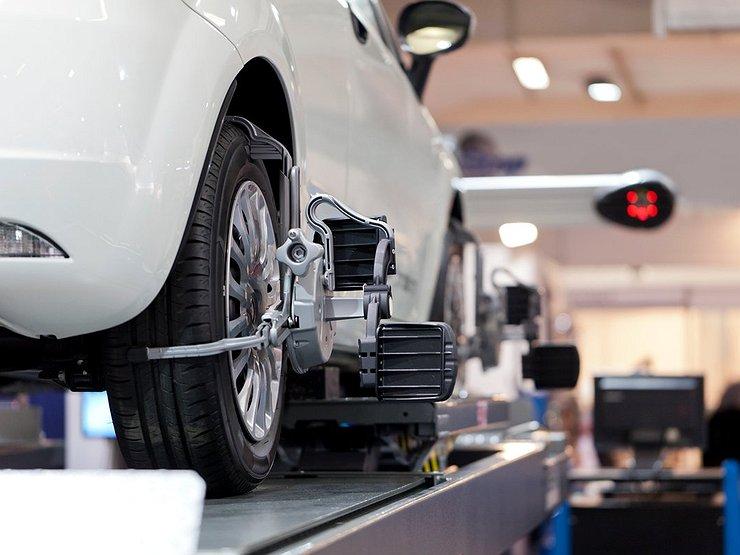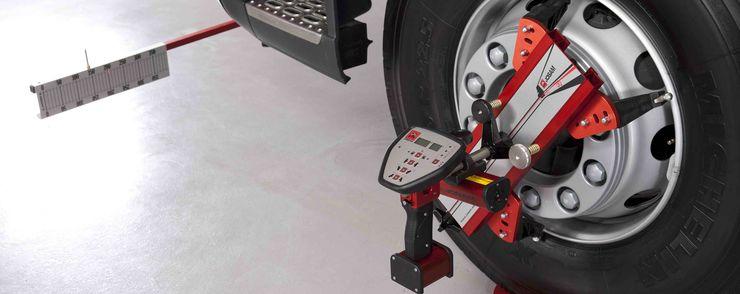
Three common misconceptions about wheel alignment
Content
Even those car owners who in life with technology only “you” are forced to have at least a vague idea of the nature of the maintenance work that is periodically required to be carried out with the car. After all, we are talking not only about the health of the "iron horse", but also about the safety of the driver and his passengers. For example, about such an important procedure as adjusting the wheel alignment angles, there are many different myths among motorists, the most common of which were debunked by the AvtoVzglyad portal.
All four wheels on the car must be set at a certain angle. If we look at the car in front or behind and see that the wheels are not strictly parallel to each other, but at a significant angle, then their camber is not adjusted. And if you look at the car from above and notice a similar unevenness, it is obvious that the wheels have a misalignment.
The correct adjustment of the wheel alignment angles, which in everyday life is called “alignment”, ensures optimal contact of the tire with the road surface when the car is moving. Not only the premature wear of the "rubber" depends on this, but most importantly - the stability of the car and its handling, and therefore - road safety.
Myth 1: once a season
Do not believe the official sites of auto repair, which recommend adjusting the wheel alignment strictly once a season. The more often customers contact them, the more profitable it is for them. But this only makes sense in one case - when summer and winter wheels have different sizes. For example, if your car is shod with low-profile 19-inch tires in summer and practical 17-inch tires in winter, you really have to spend money on wheel alignment once in the off-season. And with the same size seasonal tires, it is not necessary to adjust the corners.

Myth 2: self-configuration
Many have heard stories about how drivers of the older generation in Soviet times managed to adjust the wheel alignment angles of their “swallows” on their own. But in such cases we are talking about Zhiguli or vintage foreign cars with a simple suspension.
The vast majority of car owners will not be able to independently make wheel alignment in modern cars somewhere in the garage. This requires special equipment and the ability to use it, so it’s better not to save on such a procedure and not give the car to all kinds of garage craftsmen. In addition, do not forget that before adjusting it is recommended to undergo a full suspension diagnostics.
Myth 3: The ideal setting is 0 degrees
According to experts, the "zero" camber angle provides the maximum contact patch of the wheel with the road only in the straight steering position. That is, in this case, the machine is optimally controlled on a straight trajectory. However, when turning, the wheel tilts a few degrees, the contact patch decreases, and the opposite effect develops: the car is already less stable and brakes worse. So the ideal wheel angles on "passenger cars" are really close to zero, but rarely when they coincide with this parameter.

For each particular model, the dimensions are calculated separately depending on its weight, dimensions, technical characteristics of the engine, suspension, braking system, expected modes of operation of the car, and much more.
The software of special computer equipment for adjusting the wheel alignment contains the factory parameters of certain models, and the wizard only needs to select the desired settings.
When adjustment is needed
The most common sign of an unadjusted wheel alignment is unevenly worn tires on the outside or inside. This is usually accompanied by the following phenomenon: while driving on a flat road, the car "prowls" or pulls to the side, despite the fact that the steering wheel is held in a straight position. In the event of braking, the car also noticeably pulls to the side or even skids. Sometimes when turning the steering wheel becomes heavier and requires additional effort. All this can be considered clear signals for the need to check the wheel angle settings with specialists.
In addition, alignment adjustment is required after replacement of steering rods or tips, stabilizer links, levers, wheel or support bearings, ball joints, or after any other repair of the chassis that affects these components.
